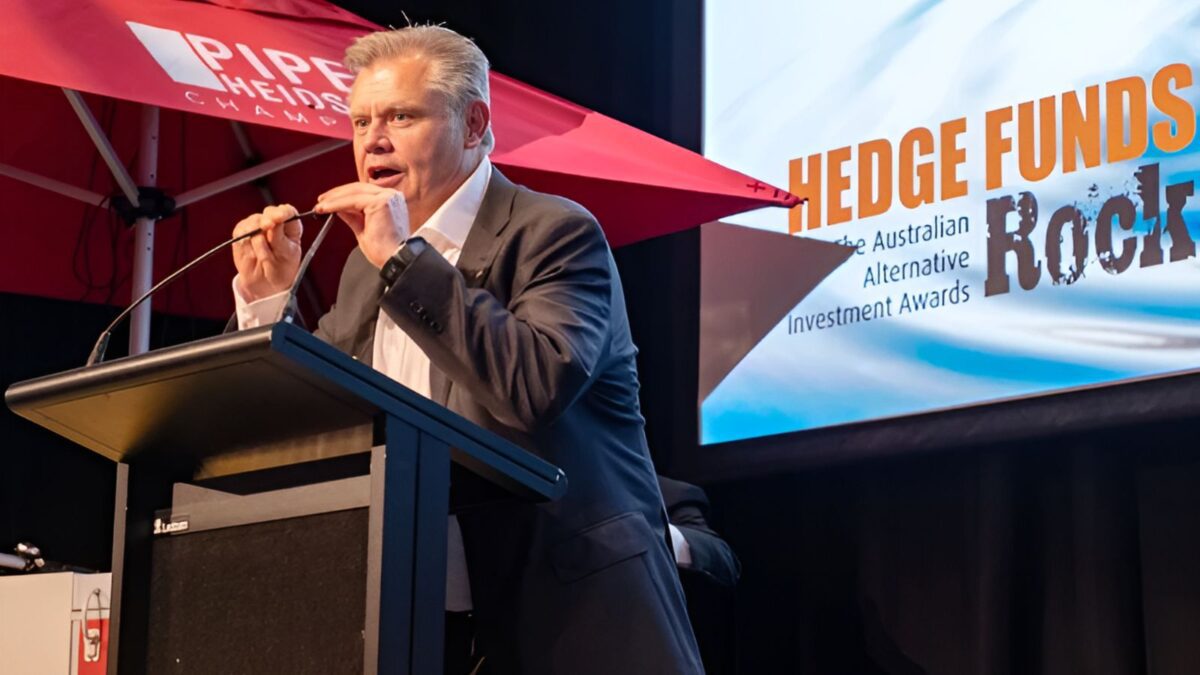Ruffer runs against the bulls
A profound shift in the investment environment demands a revolution – not an evolution – in thinking, according to Ruffer. It might be the only way to defy gravity.
The analogy that Ruffer uses for investor behaviour over the last 40 years is that of crabs. The humble crustaceans evolved to fill their niche from several distinct species, rather than from a single ancestor; the environment they exist in has consistently moulded those distinct species into a form optimised for survival on the hostile seafloor.
Ruffer believes the same principal applies to investors, who have all evolved to survive in an environment that’s beneficial to the Markowitz model of portfolio optimisation, which gives us the 60/40 bond/equity asset allocation. Were something to change that environment – and Ruffer believes it will – then everybody’s in trouble.
“This period of stability of the past 30 or 40 years has produced a high degree of optimisation. Our view is that, going forwards, redundancy should be the emphasis… to help investors create portfolios that are robust to environmental change,” Henry Joliffe, Ruffer research director, told a webinar on Wednesday (November 3).
A return to interest rate and bond return volatility, which Ruffer believes is imminent, would make the Markowitz model “creak” – requiring higher equity allocations and ensuring a decreased Sharpe ratio. But it’s only one symptom of the changing environment. The monetary policy cycle is changing, and danger also lurks “beneath the surface” of equities, with increasing incidences of skewness – huge drops in markets that wipe out long-term gains – and fat tails.

“If you’re using the (Markovitz model) to do your asset allocation, and this dynamic gets worse and is perpetuated as we think it will be, then your errors using that framework will get worse as well, and you’ll probably have adverse outcomes for your portfolio,” said Andrew Van Biljon, Ruffer research director.
To illustrate the point, Ruffer trained a computer to play the video game “Flappy Bird”, with sequential generations of bots adapting to the pre-set conditions to optimise play. After nine or so generations, each computer-controlled bird was able to navigate the course with a high degree of precision – until Ruffer increased the gravity by 20 per cent. After that, every bot failed repeatedly.
Of course, Ruffer’s investment philosophy probably differs slightly from the norm, in that they’re more interested in protecting against losses than in capturing soaring equity market returns. That means periods of years – or longer – where performance is flat compared to the broader market. Ruffer was started for private clients, and still has a focus on them, meaning it perhaps casts a more sensitive eye towards inflation risk than other shops.
Founded in 1994 by Jonathan Ruffer (who has served as its chairman since 2011) alongside Robert Shirley, the now 14th Earl Ferrers, and Jane Tufnell, its status as a venture of the more blue-blooded side of funds management belies the adventurousness of its ideas – particularly this one.
Of course, reports of the death of the 60/40 allocation have previously been greatly exaggerated. The financial press – including this publication – is littered with doomsaying about a potential flip in the negative correlation that governs the relationship between bond and equities, and the disastrous consequences that might ensue. But the performance of that traditional allocation has started to suffer in the last few months, and Ruffer believes markets are now “at a truly different point” in history, with the monetisation of fiscal spending by central banks “the genesis” for the return of bond volatility.
“We think that in the modern era it’s important to pay for protection that provides convex payoffs that can counter the increasingly negative skew and fat tailed-ness… the objective for investors isn’t to maximise return for a given level of risk, but rather to avoid a permanent capital loss,” Joliffe said.
Ruffer has historically used standard index puts for equity protection, along with measures more focused on volatility like VIX calls. To defend against rising rates, they use “swaptions”, which provide payoffs when yields are rising.
“If you’re using derivatives and these convex assets that you have to pay for, that entails a willingness to be proven wrong time and time again and to accept that in some instances the portfolio will have this cost bleed to it that could lead us in some instances to underperform our peers in the short run,” Joliffe said. “… in the long run we think they’re a necessary and integral part of the portfolio that will produce greater returns.”
Ruffer also isn’t too keen on using alternatives like infrastructure and private equity to manage volatility, and that while there are “still great opportunities in that space”, many of the benefits that come with it are “artificial”.
“We’re extremely wary of a lot of the private market approaches, and saying that with all due acknowledgement that there have been some great returns realised in that space recently,” Van Biljon said. “When you put your money into these things it will typically be locked away for a long time, and anybody doing analysis on that type of investment will necessarily be getting a very dampened view of the returns that come out of it.”
“We’re worried about the degree of leverage that’s generally around and has therefore gone into that space and might suffer if we enter into a more volatile period where valuations might have to be crunched quite a bit lower…we’re wary of the space and would caution against analysis that says it’s less volatile.”










